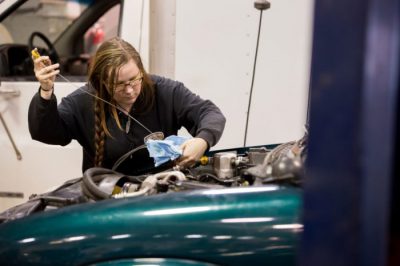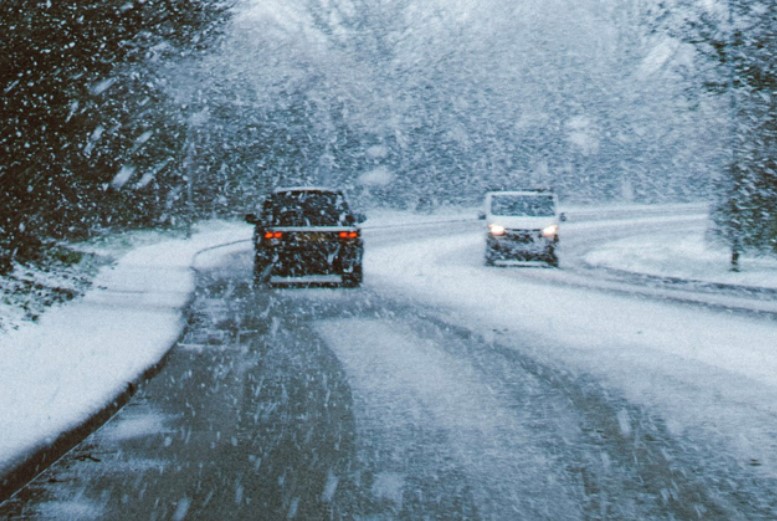By Mark Kozemko, Johnson College’s Automotive Technology Program Director. Originally published in the February 26, 2021 edition of the Valley Advantage. https://bit.ly/30cbvdk
It’s been a snowy February, but per Punxsutawney Phil, spring is on its way. It’s just going to take a little while longer to get here. As we’re preparing to say goodbye to snow and hello to warmer weather, we’re receiving questions about car maintenance that may be required after the long, cold winter. Let’s get to them so you can plan ahead.
Our first question is, “Should my car battery be replaced after the long winter we’re experiencing this year?”
Before you go and replace your battery, I recommend having it inspected and tested first. As I said in a previous column, your vehicle battery is one of — if not the most — important component to get your vehicle through a rough winter. If you had your battery inspected and tested in the fall, you should have it re-tested. Even though it had enough life to get you through the winter, that doesn’t mean its power is stable enough to keep you going throughout the spring and into summer. Extended periods of below-freezing temperatures, which we’ve experienced this year, weaken and take a lot out of a battery. Take the time now to get a new inspection and test to determine if your battery requires replacement.
“Does my engine oil need to be changed after the cold winter months?” is our second question.
When we discussed oil change intervals in a previous column, I recommended that you keep your maintenance schedule on track throughout the year and I’m sticking with that recommendation. Oil changes are the most economical maintenance you can do to drastically extend the life of your vehicle’s engine. Don’t go beyond the recommended time or mileage between oil changes, but you can change your vehicle’s oil sooner or more often than recommended. As the vehicle owner, it’s your call on whether you think the mileage or time is close enough to put fresh oil in your engine.
“Is there such a thing as summer and winter air that I should put in my tires?” is our third question.
There is no such thing as summer or winter air. It’s just compressed air.
You can, however, have your tires inflated with nitrogen, which helps eliminate oxidation and corrosion. Nitrogen pressure in a tire will bleed off or dissipate much slower than compressed air and you’ll see slightly higher fuel mileage with it. If you’re thinking about using nitrogen, it is considered a green alternative, which means it’s better for the environment. One thing to keep in mind, with compressed air, you can check and adjust your own tire pressure. If you use nitrogen, you’ll have to find a repair shop equipped with it to adjust your pressure. It will cost you to have your tires inflated with nitrogen more than you pay for compressed air.
Our final question is actually two questions, “How do I clean the buildup of salt and chemicals that accumulated under my car over the winter?” and “Can I do it myself?”
The best way to clean the underbody of your vehicle is by using a pressure washer. Most repair shops have pressure washers that are used for a variety of jobs, including cleaning customer vehicle undercarriages. These pressure washers come in many different pressures and gallons per minute. They also have several different spray tips, from wide-angle to a pencil spray, and include attachments that connect to the hose and slide under the vehicle, making it easier for technicians to get the undercarriage clean. Prices range for this service at repair shops or body shops.
Can you do it yourself? Yes, but you’ll have to purchase a pressure washer and attachments. The consumer versions come in a variety of pressures and usually two power options, gasoline or electric. The good news is, you have choices for your individual needs and situations. Keep in mind, to make any of these pressure washers work as designed, you will need a water supply. Lastly, you have to be ready to get wet!
With these steps and, of course, guidance from your automotive technician, your vehicle will be back in shape after enduring a cold and snowy northeastern Pennsylvania winter. I’m not sure about you, but I’m hoping next year Punxsutawney Phil doesn’t see his shadow and we’ll get an early spring.


